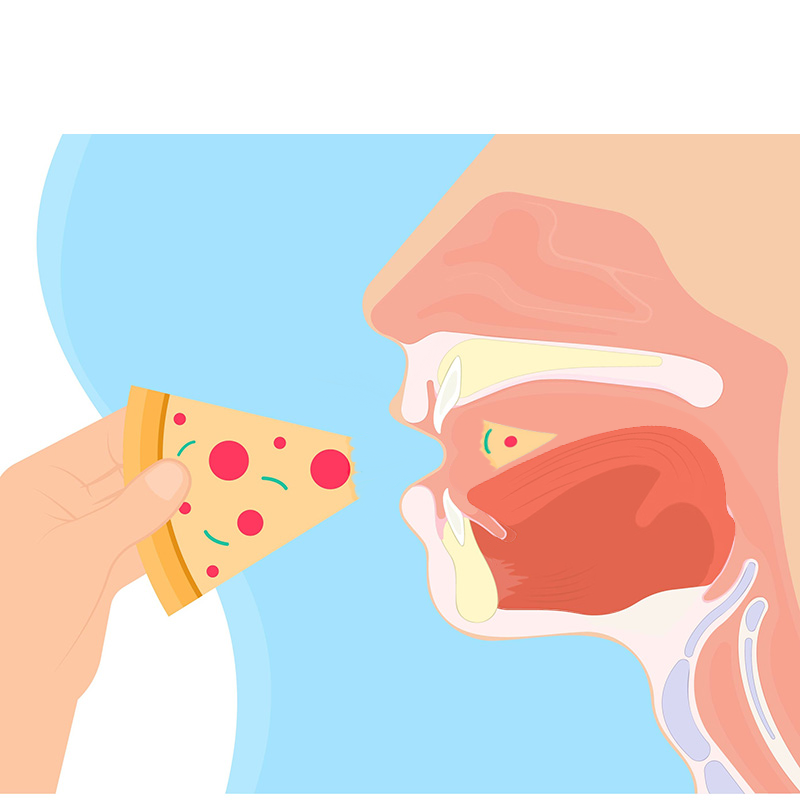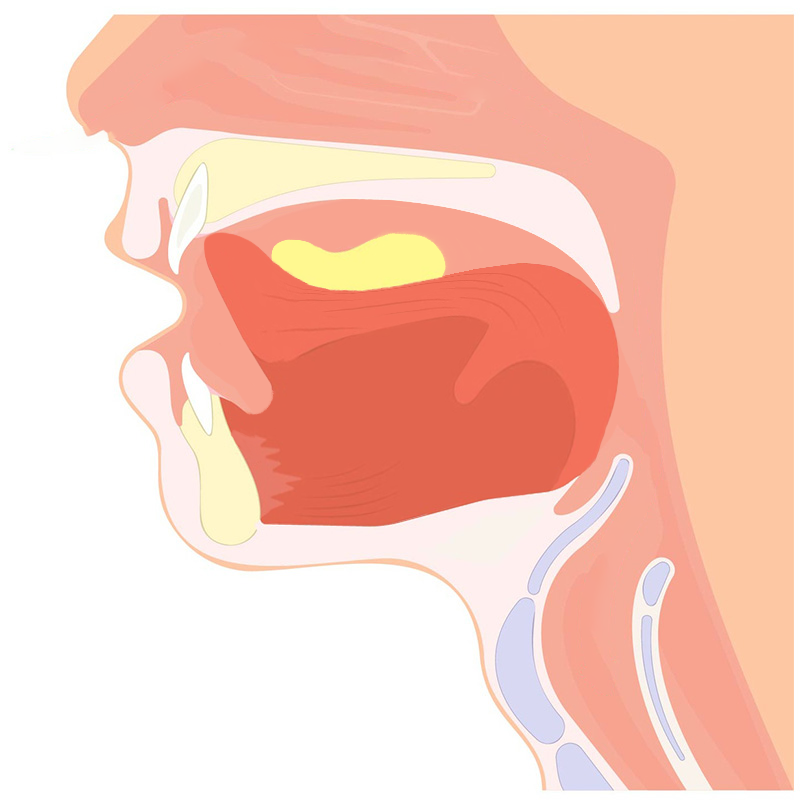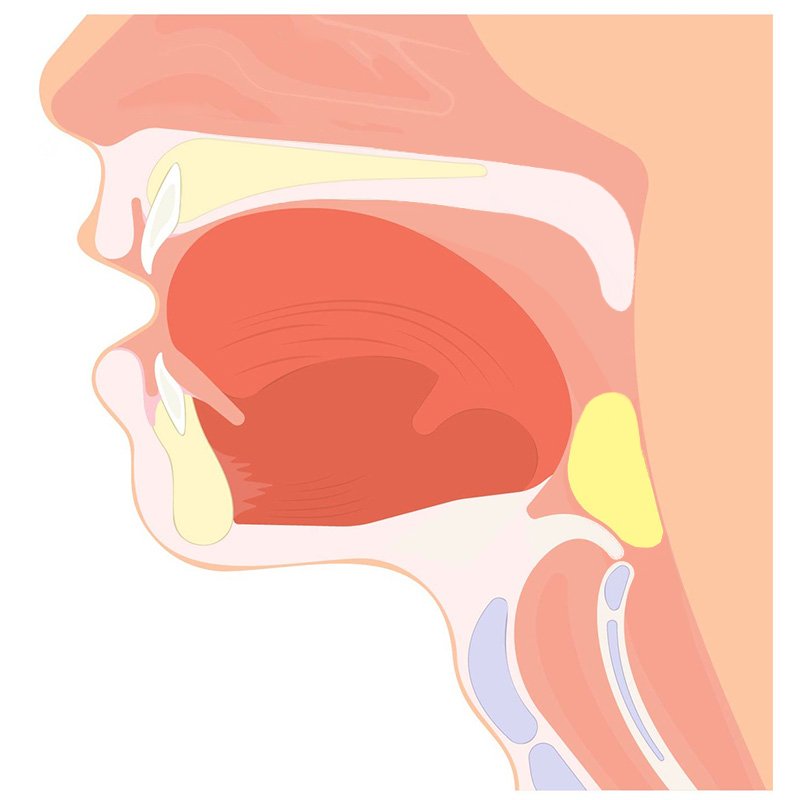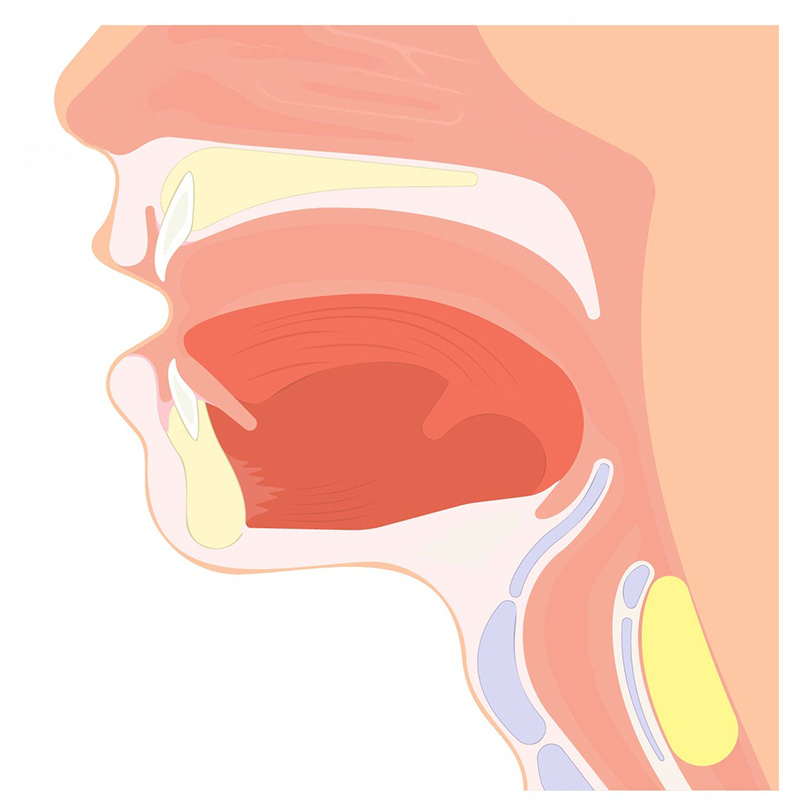Information on swallowing
Swallowing is one of life’s fundamental biological processes that we develop before we are born.
We swallow over 900 times a day, three times an hour while we sleep, once a minute when we are awake, and even more when we eat or drink. It happens so instinctively to us that we rarely give it any thought, but in fact, it is a hugely complicated process that can be broken down into four stages: oral preparatory stage, oral stage, pharyngeal stage and oesophageal stage.
The main goal for swallowing is the successful delivery of food or liquid from the mouth into the stomach. This might sound simple enough, but the ‘time sharing’ function of the vocal tract for both swallowing and breathing increases the risk of us choking when swallowing.

The 4 stages of swallowing
Swallowing can be described as a four-stage process.

Oral Preparatory Stage
Food or drink are prepared to the right size and consistency of bolus in the oral preparatory stage.
This might involve chewing to reduce the size of the bolus, which consists of placing the food on the teeth by the tongue, and the lateral rotary movement of the jaw to grind the food bolus down. The food bolus then falls back on the tongue and the cycle repeats itself until the correct consistency is reached. The bolus will then be held on the tongue and ready for the next stage of swallowing
Sometimes we also take in more food and drink than we can swallow in one go. Our tongue divides the bolus into smaller portions, with the portion ready to be swallowed held on the tongue and the rest at the front or the side.
In the oral preparatory stage, the back of your tongue is raised and the velum is lowered to prevent the bolus from entering the pharynx too early.

Oral Stage
The bolus is transported from the front of the mouth to the back in the oral stage.
The bolus is held in the middle of the tongue. The blade, followed by the dorsum then makes contact with the palate to move the bolus backwards along the tongue. The back of the tongue is then lowered and the velum goes up to separate the oral and the nasal cavity. This ramping action from the front of the tongue helps to deliver the bolus into the pharynx.

Pharyngeal Stage
The pharyngeal stage begins when the bolus is present in the pharynx. During the pharyngeal stage, the bolus is transported from the oral pharynx (the back of the tongue) into the oesophagus. One of the key movements in the pharyngeal stage is the upward and forward movement of the hyoid and the thyroid, which helps to support the closure of the airway by pushing the epiglottis downward. Together with the closure of the vocal folds, the airway is protected while the bolus passes through the pharynx.
The entrance to the oesophagus, the upper oesophageal sphincter, is normally closed. The upward and forward movement of the hyoid and the thyroid also helps open the upper oesophageal sphincter. This allows the bolus to pass into the oesophagus.

Oesophageal stage
Once the bolus has passed through the upper oesophageal sphincter, it is transported down the oesophagus by means of peristaltic contractions. When the bolus reaches the bottom of the oesophagus, the lower oesophageal sphincter opens up and the bolus is then successfully delivered into the stomach.
Dysphagia
Dysphagia refers to eating, drinking and swallowing difficulties affecting any or all stages of swallowing function. It can result from a neurological condition (such as stroke and Parkinson’s disease), structural changes to the vocal tract (such as in patients with tracheostomy), or associated with other conditions such as cerebral palsy or premature birth.
Additional information on dysphagia, clinical assessment and management can be found in the link below:
Explore USES
USES (UltraSound Evaluation of Swallowing) is a dynamic ultrasonic procedure that provides a direct view of the oral and pharyngeal functions during swallowing.
Explore USES, it's features and it's associated research projects below.

